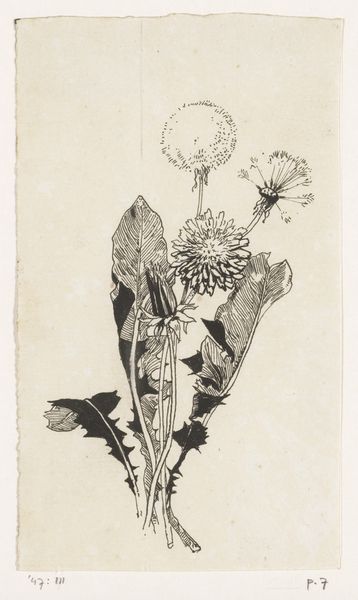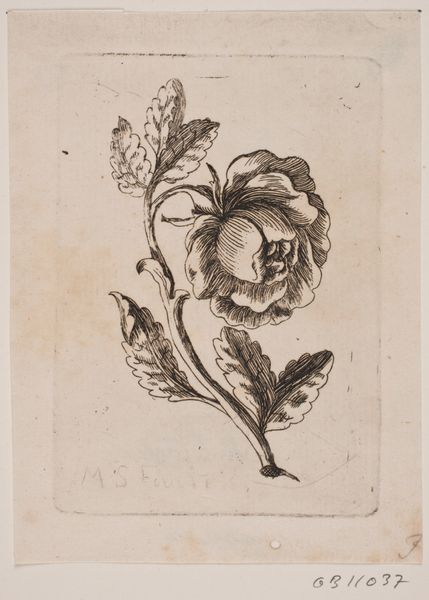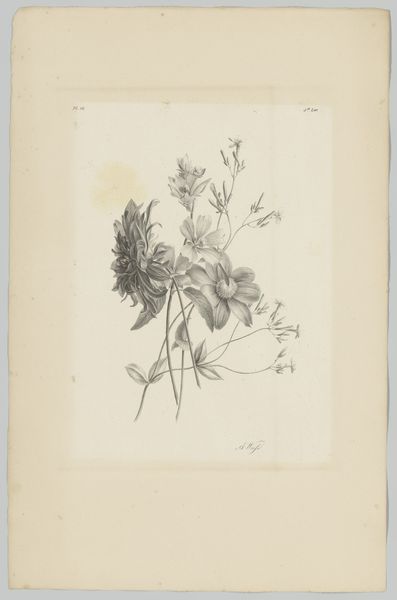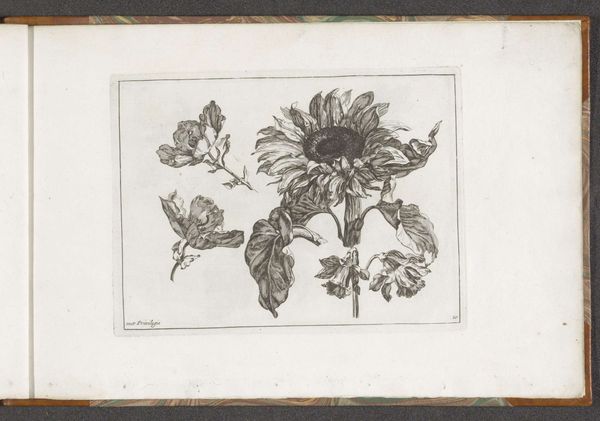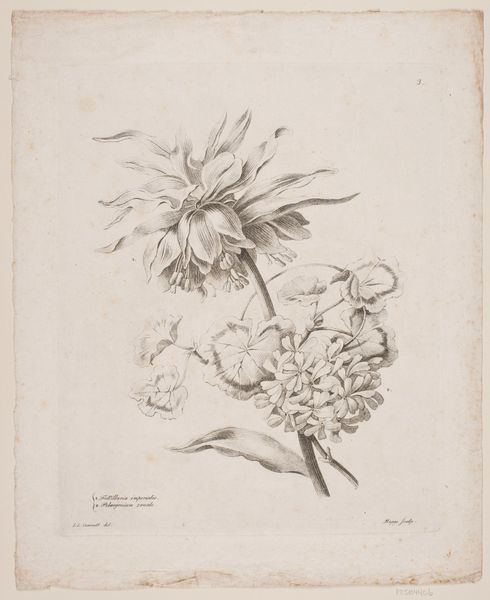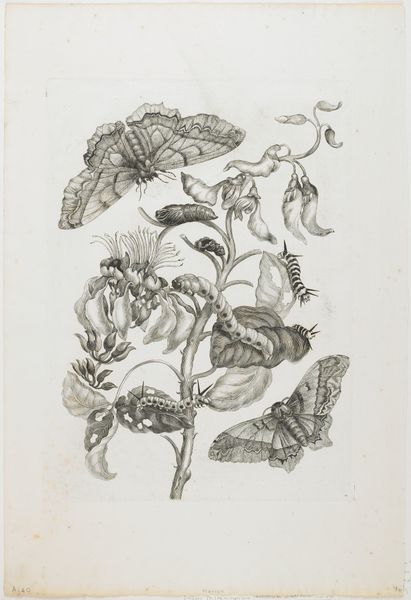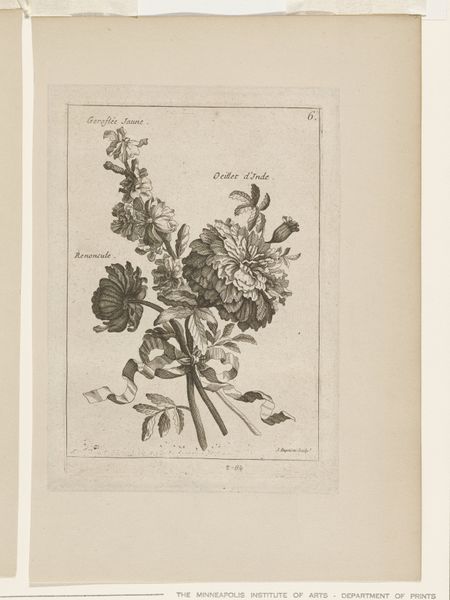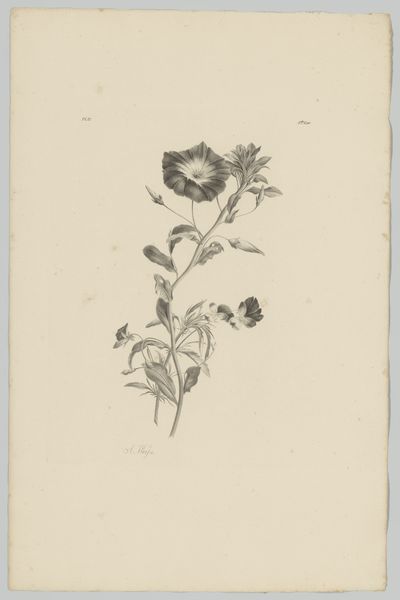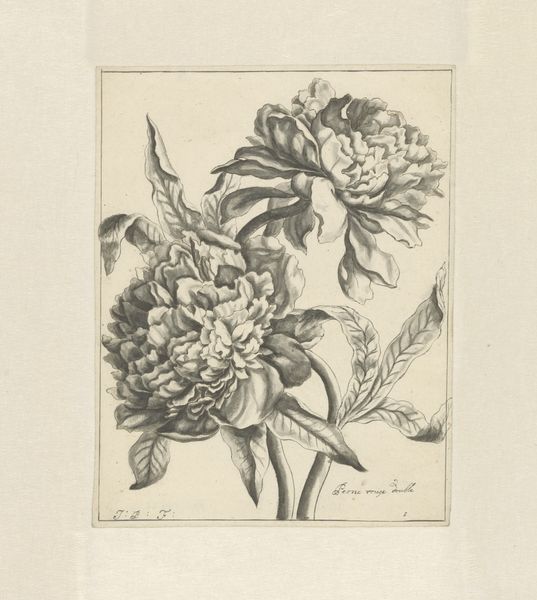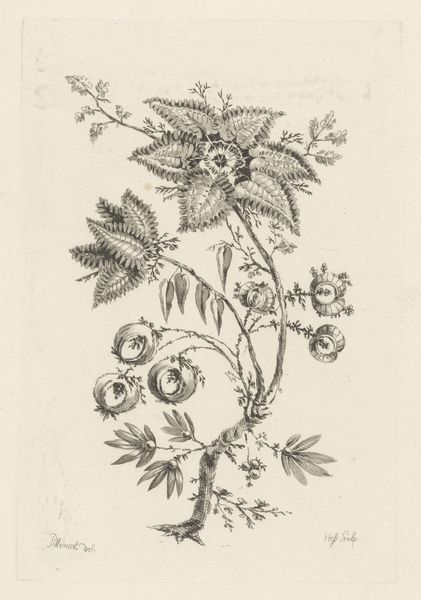
drawing, print, etching, paper, ink, drypoint
#
drawing
#
art-nouveau
# print
#
etching
#
etching
#
paper
#
ink
#
drypoint
Dimensions: 16 1/16 x 7 1/2 in. (40.8 x 19.05 cm) (plate)
Copyright: Public Domain
Ernest-Ange Duez made this etching, Fleurs, sometime in the late nineteenth century. It depicts a small bunch of flowers, perhaps for a buttonhole. The image is reminiscent of Japanese woodblock prints, which were a popular source of inspiration for European artists at that time. But consider what else was going on in France when Duez made this. The country was still recovering from a humiliating defeat by Germany in 1870. The French Third Republic was trying to reassert its national pride and project an image of sophistication and taste. There was renewed interest in the decorative arts and luxury goods. The art world was highly institutionalized with the official salons of the Académie des Beaux-Arts. Duez himself won medals at the Salon and sat on the jury. His print needs to be understood in relation to these circumstances. Art historians would look at the exhibition records and reviews of the Salon to get a better sense of how Duez's work fits into the art world of his time. The meaning of art is always contingent on its social and institutional context.
Comments
minneapolisinstituteofart almost 2 years ago
⋮
Ernest-Ange Duez's almost botanical detailing signifies the burgeoning field of plant science that was developing alongside Art Nouveau. In Paris, public greenhouses multiplied after 1850, enabling artists to study blooms all year long.
Join the conversation
Join millions of artists and users on Artera today and experience the ultimate creative platform.
